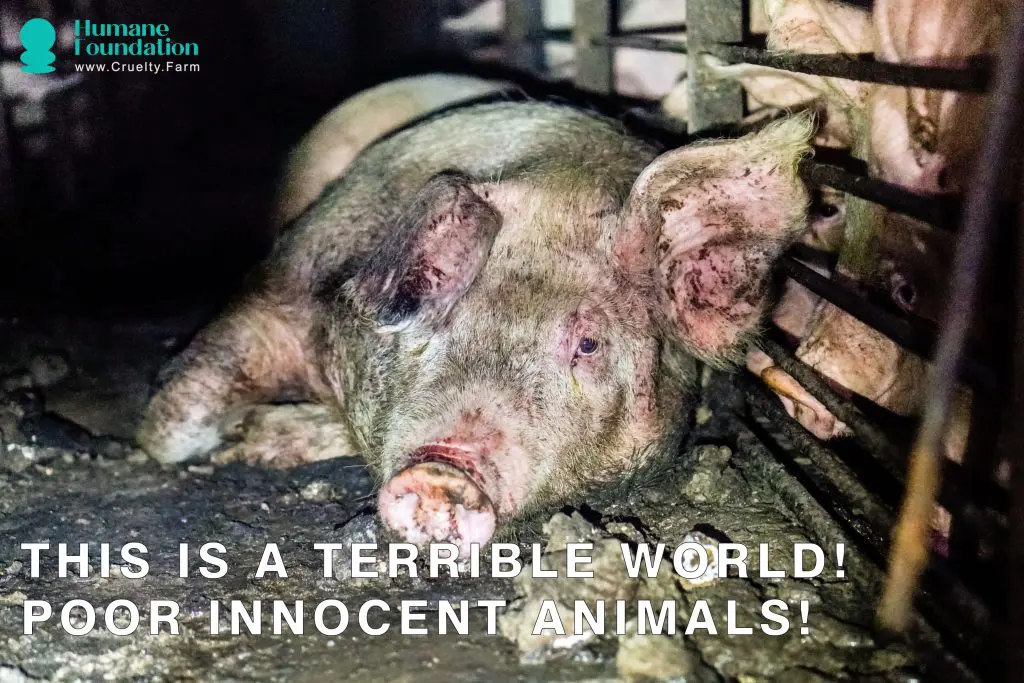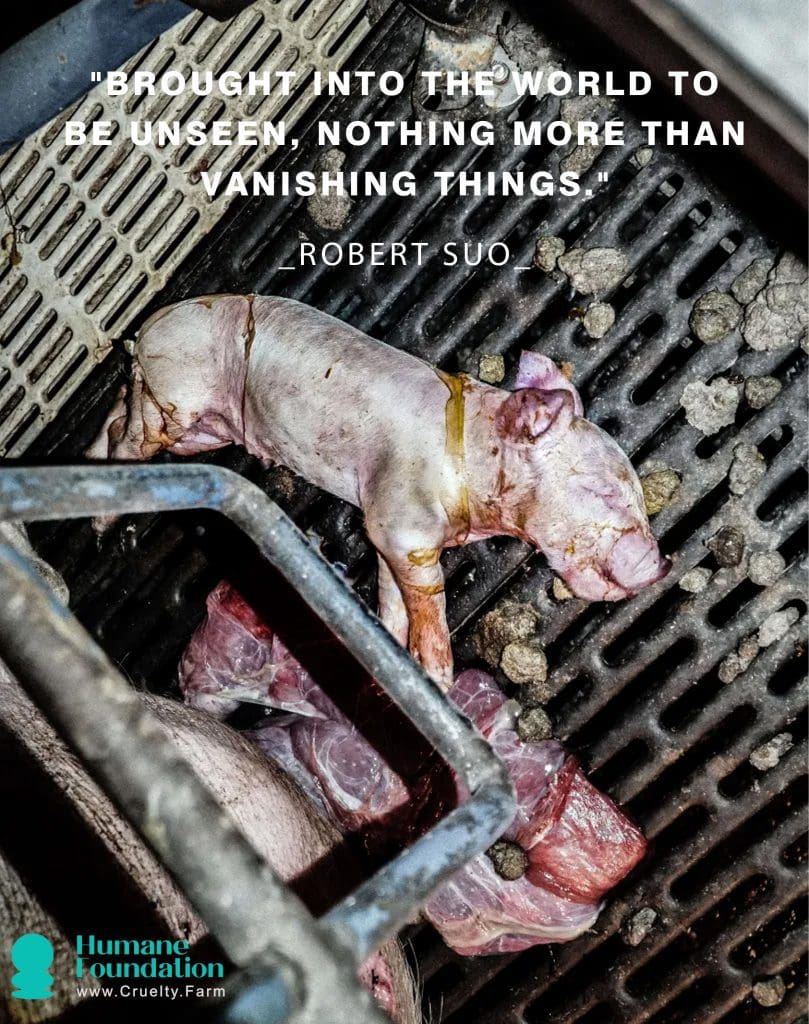Factory farming is a practice that has become increasingly prevalent in today’s society, but its dark side is often overlooked. Behind the seemingly efficient and cost-effective production of animal products lies a world of extreme cruelty and suffering. This post aims to shine a light on the disturbing reality of animal cruelty in factory farms, exposing the harsh conditions and inhumane practices that animals are subjected to on a daily basis. It’s time to take a closer look at the dark side of factory farming and start a conversation about the urgent need for change.
Factory farms contribute to animal cruelty by subjecting animals to inhumane living conditions.
Animals in factory farms are often overcrowded, which leads to high levels of stress and aggression.
The routine use of antibiotics in factory farms poses health risks for animals and consumers.
Factory farms often use cruel practices such as debeaking and tail docking without pain relief.
Animal cruelty in factory farms can have detrimental environmental impacts, including pollution and deforestation.

Factory farms prioritize profit over animal welfare, leading to widespread cruelty.
The confinement of animals in factory farms restricts their natural behaviors and causes psychological distress.
Video footage and undercover investigations have revealed shocking instances of animal abuse in factory farms.
The lack of proper regulations and oversight allows animal cruelty to persist in factory farms.
Consumer demand for cheap meat and animal products drives the continued existence of factory farms.
Exposing the Hidden Cruelty in Factory Farms
Factory farms go to great lengths to keep their cruel practices hidden from the public eye. Behind closed doors, animals suffer unimaginable cruelty and abuse.
One of the ways factory farms perpetuate cruelty is by using confinement systems that restrict animals’ movement and prevent them from engaging in natural behaviors. Cows, pigs, and chickens are often crammed into small cages or crates, unable to move freely or exhibit natural behaviors.

In addition, animals in factory farms are commonly subjected to painful procedures such as debeaking and castration. These procedures are often performed without anesthesia, causing unnecessary pain and suffering.
The psychological distress experienced by animals in factory farms is also a major concern. Animals naturally have complex behavioral needs, but the confinement and stressors in factory farms lead to abnormal behaviors and even aggression among the animals.
The hidden cruelty in factory farms has been brought to light through the use of hidden cameras and whistleblower accounts. These investigations have revealed shocking instances of animal abuse, including kicking, beating, and neglect.
Factory farms prioritize maximizing production efficiency and profitability over animal welfare. This means that the well-being of the animals is often ignored to maximize profits.
It is crucial to shine a light on the hidden cruelty in factory farms and raise awareness about the suffering that animals endure. Only then can we work towards making a change and finding more compassionate alternatives to support.
Animal abuse in factory farms goes beyond physical cruelty and also includes neglect and lack of veterinary care. Animals are subjected to cramped and unsanitary living conditions, with little regard for their well-being. The high demand for animal products fuels the cycle of mass production and animal abuse in factory farms. Aggressive breeding methods are commonly used, leading to health problems and chronic pain in animals.
Many factory farms engage in practices such as debeaking and tail docking, causing unnecessary pain and suffering. The conditions in which animals are kept are often overcrowded and unsanitary, with inadequate ventilation that can lead to respiratory issues and diseases. Animals are confined in small cages or crates, preventing them from engaging in natural behaviors.
The overuse of antibiotics in factory farms contributes to the development of antibiotic-resistant bacteria. Factory farms prioritize profit margins over animal welfare, leading to widespread neglect and abuse.
It is crucial to shed light on the cruelty that occurs in factory farming and recognize the detrimental impact it has on animals. By raising awareness and making informed choices, consumers can play a role in reducing animal abuse in factory farms and supporting more humane and ethical farming practices.
An Inside Look at Animal Cruelty in Factory Farms
Factory farms subject animals to extremely crowded and unsanitary living conditions. Animals are often crammed into small spaces, unable to move or engage in natural behaviors. This confinement leads to immense physical and psychological suffering.
The lack of proper ventilation in factory farms exacerbates the already dire conditions. Animals are exposed to poor air quality, which can result in respiratory issues and diseases.
Furthermore, factory farms commonly confine animals in small cages or crates. This prevents them from exhibiting natural behaviors such as walking, running, and stretching. Instead, they spend their lives in cramped and restricting environments.
Another concerning aspect is the overuse of antibiotics in factory farms. This practice contributes to the development of antibiotic-resistant bacteria, posing a threat to both animal and human health.
It is important to recognize that factory farms prioritize profit margins over animal welfare, leading to the widespread neglect and abuse of animals under their care.
Breaking the Silence
Factory farming practices result in immense physical and psychological suffering for animals. Animals raised in factory farms endure routine practices of cruelty, including forced molting and tail docking. These farms often use gestation crates and battery cages, severely restricting animals’ movement and natural behaviors.
The driving force behind the animal cruelty in factory farms is the desire for maximum productivity and profitability. These facilities prioritize efficiency at the expense of animal welfare. As a result, animals are subjected to inhumane conditions and unnecessary pain and suffering.
It’s important to recognize that animal cruelty in factory farms is not an isolated issue limited to large-scale operations. Smaller farms may also engage in these practices. The emphasis on efficiency and mass production perpetuates a cycle of abuse and contributes to the degradation of both animal welfare and the environment.
As consumers, we have the power to make a difference. By choosing to support more humane and ethical farming practices, we can send a message that animal cruelty in factory farms is unacceptable. By demanding transparency and advocating for change, we can help bring an end to the suffering endured by animals in these facilities.

Factory farming systems prioritize efficiency and profitability, resulting in widespread animal cruelty.
The lack of transparency in factory farms makes it difficult to hold them accountable for their actions.
Factory farms often use cruel practices such as beak trimming and tail docking without anesthesia.
Animal cruelty in factory farms is not limited to large-scale operations but also occurs in smaller farms.
Factory farming perpetuates a cycle of animal abuse and environmental degradation.
Challenging the Status Quo: Working Towards a Solution for Animal Cruelty in Factory Farms
To address the pervasive issue of animal cruelty in factory farms, it is crucial to challenge the status quo and work towards a solution. Here are some steps that can be taken:
- Consumer awareness and demand: Increasing consumer awareness about the realities of animal cruelty in factory farms and the benefits of ethical farming practices is essential. By demanding ethically sourced products and supporting brands that prioritize animal welfare, consumers can drive change in the industry.
- Support legislation and organizations: There are various organizations and advocacy groups working towards improving animal welfare in factory farms. Supporting these organizations through donations or volunteering can contribute to their efforts in combating animal cruelty.
- Transition to sustainable and humane farming practices: Encouraging the adoption of more sustainable and humane farming practices can help mitigate animal cruelty in factory farms. This includes promoting outdoor access for animals, reducing overcrowding, and providing appropriate veterinary care.
- Educate consumers: Raising awareness about the realities of factory farming through education campaigns can help consumers make more compassionate choices. Informing them about the detrimental effects of animal cruelty and advocating for alternatives to animal products, such as plant-based diets, can reduce the demand for factory farmed animals.
- Advocate for change: Individuals can participate in advocating for legislative changes that promote animal welfare. Writing to legislators, signing petitions, and participating in public demonstrations can put pressure on the industry to prioritize animal welfare over profits.
By challenging the status quo and actively working towards a solution, we can pave the way for a future where animal cruelty in factory farms is minimized, if not eradicated entirely.
Conclusion
The dark reality of animal cruelty in factory farms is a pressing issue that demands attention. The inhumane living conditions, routine use of antibiotics, and cruel practices employed in these farms contribute to the physical and psychological suffering of animals. The hidden cruelty behind closed doors, exposed through undercover investigations and video footage, sheds light on the need for change in our farming practices.
Factory farms prioritize profit over animal welfare, perpetuating a cycle of abuse and neglect. However, as consumers, we have the power to make a difference. By actively choosing to support more humane and ethical farming practices and advocating for stronger regulations and oversight, we can challenge the status quo and work towards a solution.
It is crucial to raise awareness about the realities of factory farming and its detrimental impact on animal welfare. Providing education and promoting alternatives to animal products can also help reduce the demand for factory farmed animals. Ultimately, it is our collective responsibility to break the silence, shed light on the cruelty, and strive for a more compassionate and sustainable future for animals.
4/5 - (43 votes)



